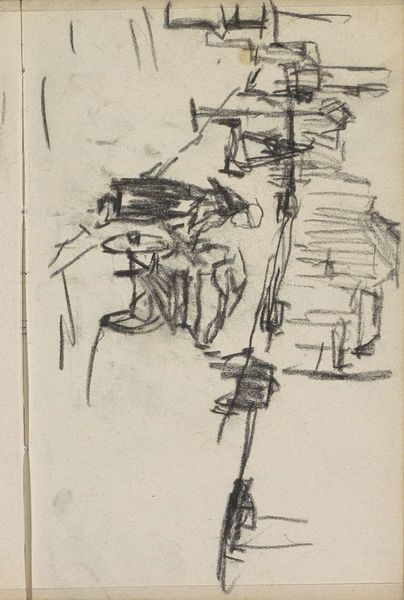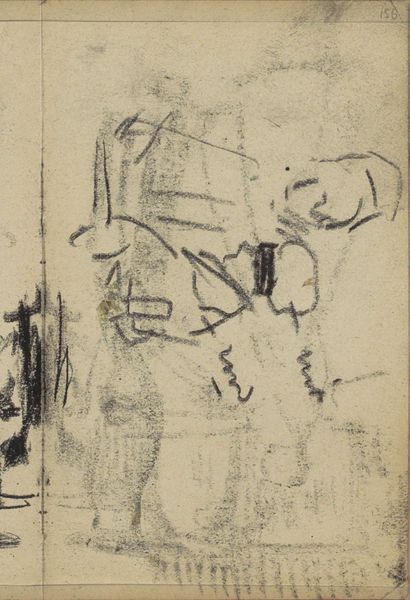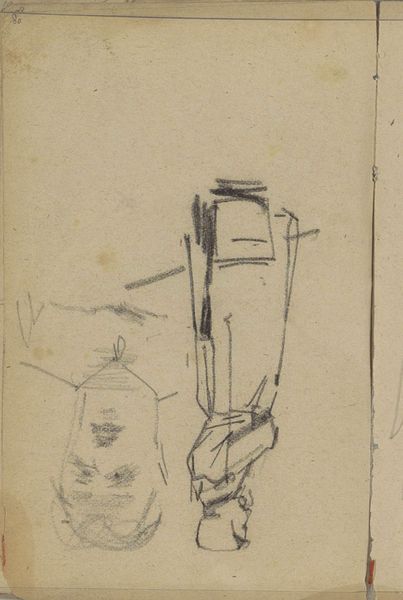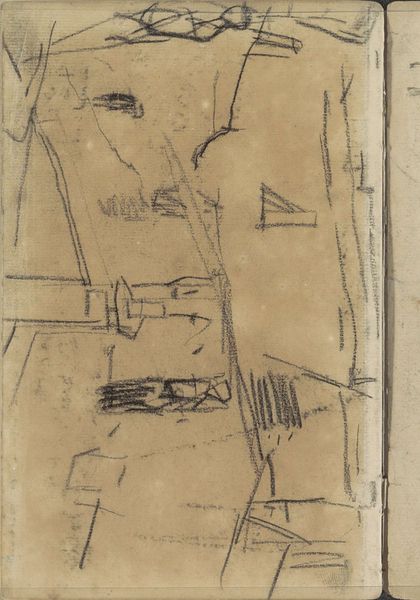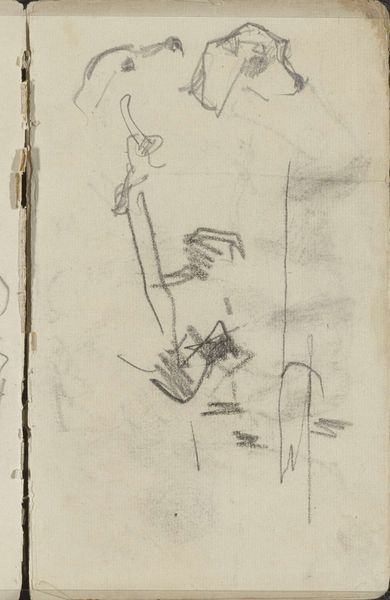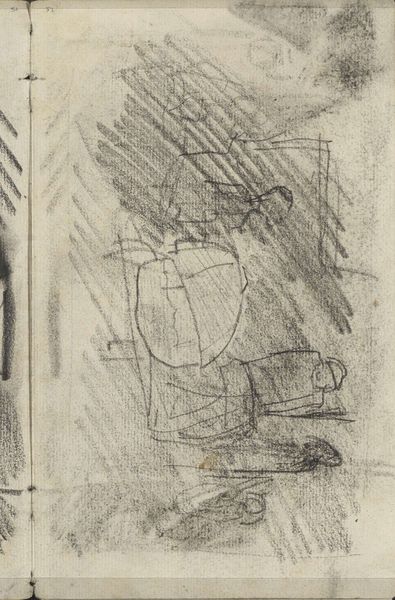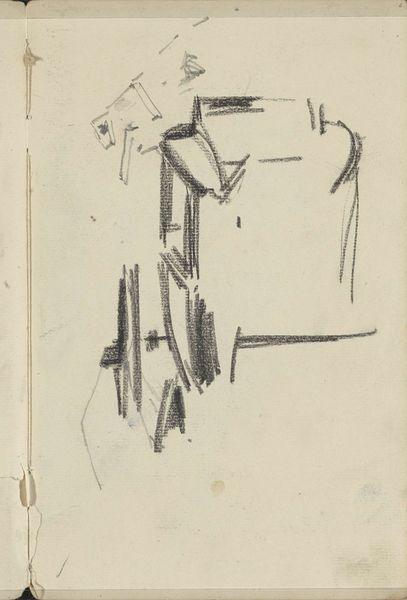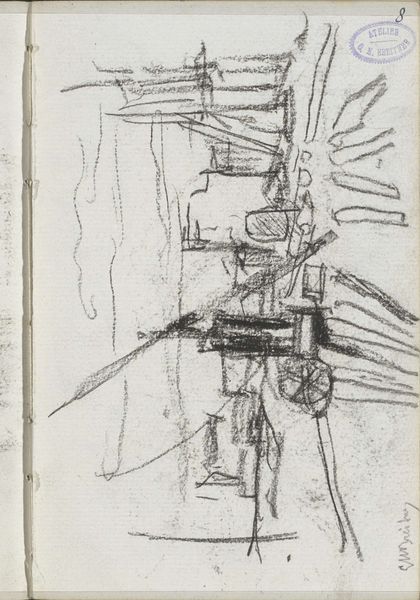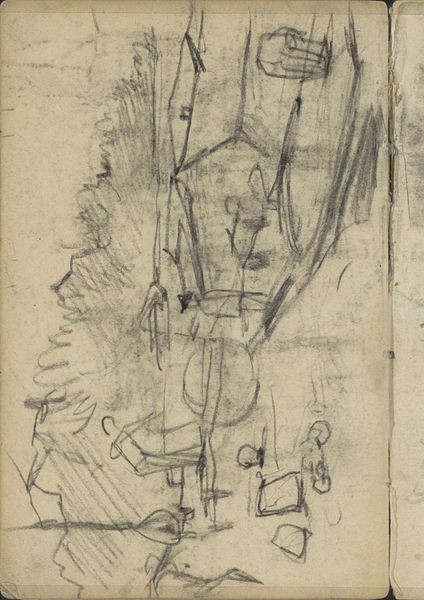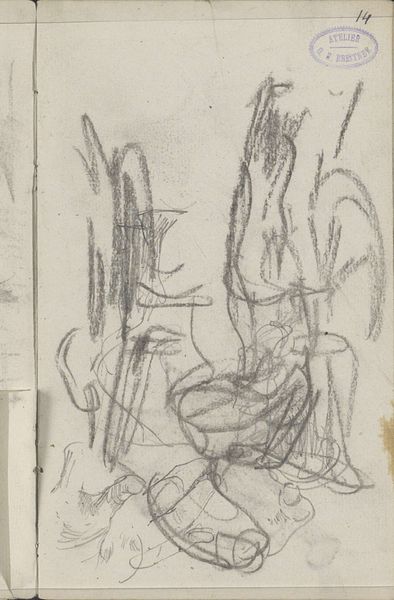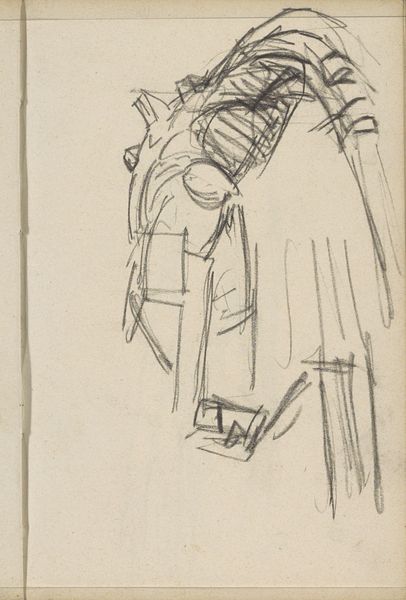
Copyright: Rijks Museum: Open Domain
Curator: This is a drawing by George Hendrik Breitner, titled "Vrouw met twee meisjes," dating from around 1886 to 1903. It's currently held in the Rijksmuseum collection, created with graphite on paper. Editor: Immediately, I'm struck by the sheer economy of line here. Breitner captures these figures with an incredible gestural brevity, creating a sense of intimate, transient observation. Curator: Breitner often depicted working-class subjects, particularly women and girls in Amsterdam. The positioning, the near-obscuring of faces – it's tempting to read this as a meditation on societal position and visibility, but through his visual style it feels natural and unfiltered. The lack of detail forces us to consider broader strokes of emotion and collective identity. Editor: I see the rapid strokes of the graphite less as a commentary and more as an essential part of his process. The visible, raw marks remind us that we are looking at a work born of quick decisions, of immediate interaction with the subject. Paper itself lends a crucial humbleness and immediacy; It's almost like a sketch torn from an artist's working notebook and meant for reference, rather than its own object. Curator: Certainly, the sketch-like quality does invite a different relationship than a highly polished piece would. The lines are heavy, creating a strong contrast and making the scene easily readable and full of depth with its simplified forms. Graphite on paper becomes a medium to access unfiltered social interactions and daily human movements. Editor: Yes, but to emphasize further, that it *is* graphite also speaks volumes. Breitner clearly isn’t interested in hiding the work’s creation. The visible marks show artistic labor; it suggests the immediacy of his process is something that carries weight of meaning, instead of striving to hide his material means. Curator: Perhaps that visibility, both of the subjects and the means, becomes Breitner’s most lasting symbol. It reveals something profound, an almost journalistic capture, if we could extend the understanding of reportage in a symbolic way. Editor: Ultimately, regardless of Breitner’s intentions, the humble materials transform our perception – graphite and paper aren’t about grandeur, but instead propose the quiet intimacy that drawing itself can give access to.
Comments
No comments
Be the first to comment and join the conversation on the ultimate creative platform.


